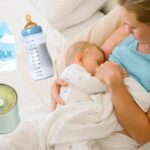
Nano and cosmetics

Dossier: Nanos in cosmetics
By the AVICENN team – Last modification July 2024
Almost all cosmetic products contain nanos: toothpastes, sunscreens, anti-aging creams, foundations, nail polishes, mascaras, eyeliners, lipsticks, hair dyes, blushes, powders, soaps, shower gels, deodorants…
These nanos are mainly colorants, texture agents, antibacterial or UV filters.
Despite the labeling obligation (theoretically in force in Europe since 2013, but insufficiently applied) and the publication of a pseudo “catalog” by the European Commission in 2017 / 2019, the precise identification of nanoparticles in cosmetics is still very difficult today for consumers and health authorities, unless they resort to laboratory analysis.
Due to a lack of reliable data, their associated health risks are still poorly identified and assessed.
As for the risks to the environment, they are still insufficiently taken into account by the risk assessment and regulating authorities.
Where are nanos in cosmetics, what are they used for, how can they be detected and can they be replaced? How are they managed in France and in Europe? What are their risks to human health and ecosystems? These information sheets explore these different questions and will be enriched as we continue to monitor and receive your contributions.
The information sheets in this section
Other news on the topic
Upcoming Nano Agenda

- E-learning program: awareness-raising for personnel who come into contact with nanomaterials during research, formulation, production, maintenance, cleaning, upkeep, etc., as well as safety coordinators or engineers, facility managers, heads of laboratories where nanoparticles are handled.
- Organizers: INSTN Grenoble (CEA)
- On the program:
- 1 – Introduction, definition and characteristics of nanomaterials
- 2 – Toxicity of nanomaterials: the state of knowledge
- 3 – Metrology and characterization of nanomaterials
- 4 – Prevention and protection against nanomaterials in the workplace
- 5 – Quiz: assessment of learning outcomes
- The 2-hour course can be viewed for one month from the date of registration.
- Website: https://instn.cea.fr/…risques-lies-aux-nanomateriaux…
- Annual conference of the NaMasTE research group (Manufactured Nanomaterials, Toxicology, Ecotoxicology and Risks: towards controlled development)
- Dates: December 9 and 10, 2025
- Organizers: CNRS
- Website: https://namaste2025.sciencesconf.org
- 8th Congress of Occupational Medicine and Health (CNMST 2026)
- Theme 5: Emerging pathologies and risks, Mr Henri Bastos (ANSES), Pr Lynda Bensefa-Colas (AP-HP), Dr Catherine Nisse (CHU Lille)
- Website: www.medecine-sante-travail.com
Any questions or comments? This information sheet compiled by AVICENN is intended to be completed and updated. Please feel free to contribute.
This file was originally created in February 2019



